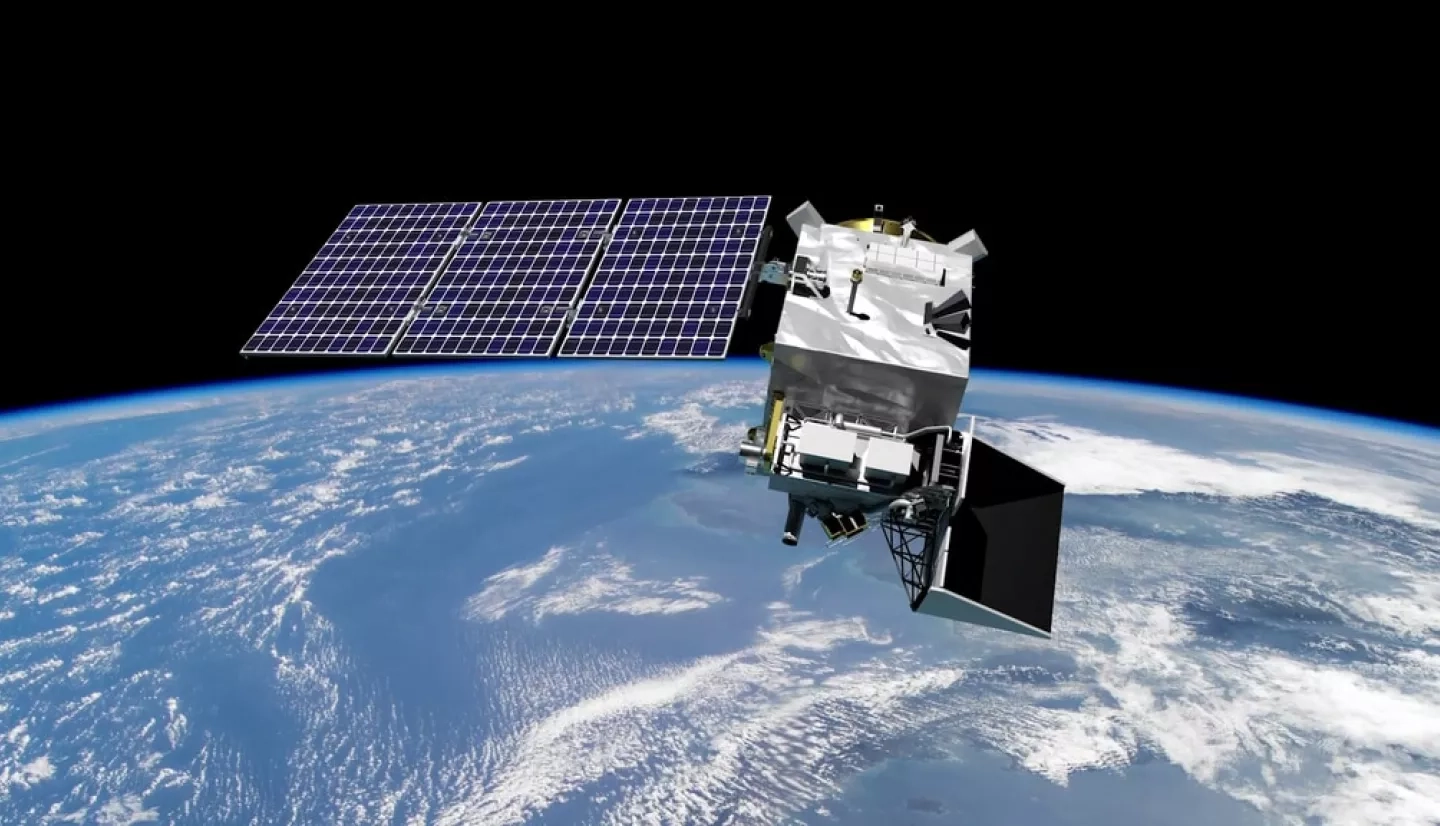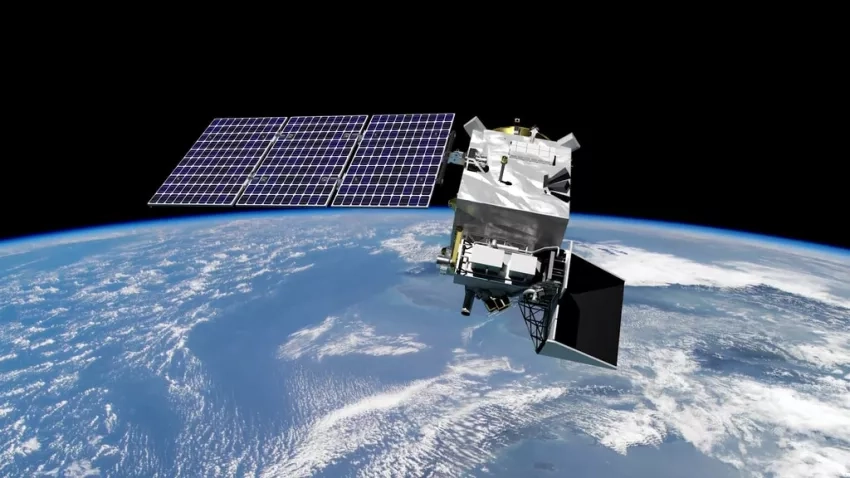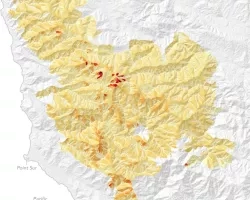Note: An earlier version of this article cited that the Ocean Color Instrument to have the ability to view a broad spectrum from 350 to 885 nanometer wavelengths at 5 nanometer intervals. The article has been updated with additional details below.
An upcoming NASA satellite mission is set to help track and study the fine particulate matter that is emitted into the atmosphere as fires burn. Scheduled to launch no earlier than 2024, the Plankton, Aerosol, Cloud, ocean Ecosystem (PACE) mission is NASA’s upcoming satellite mission to advance global understandings of oceanic and atmospheric interactions. Equipped with an Ocean Color Instrument (OCI) and two Multi-angle Polarimeters, PACE aims to extend existing data records and answer key questions on ocean biology and biogeochemistry, aerosols, and clouds.
With the ability to view a broad spectrum from 340 to 890 at 2.5 nanometer intervals at a 5 nanometer resolution, the OCI is hyperspectral and capable of avoiding the “blind spots” which have obstructed previous sensors from obtaining wholly accurate imagery of the ocean. This will allow PACE to monitor the distribution and abundance of phytoplankton, or marine algae, which help sustain aquatic food webs that are critical for both ecological health and the global economy.
Despite its outright focus on ocean biology, PACE’s atmospheric data will be used for a broad range of applications, including for terrestrial events such as wildfires. As wildfires burn through fuels, large amounts of fine particulate matter are emitted into the atmosphere and mix with gases to become aerosols. OCI data products such as Spectral Aerosol Optical Depth will provide information on the atmospheric concentration of these aerosols, and the Multi-angle polarimeters will reduce the uncertainty of smoke plume injection height and aerosol height profiles.
These observations will improve our understandings of how aerosols behave in the atmosphere and impact vulnerable populations on the ground. Research indicates that communities of low socio-economic status and the elderly are more susceptible to the health impacts of exposure to air pollution. PACE’s contributions to air quality forecasts will help reduce uncertainty and increase preparedness in these communities in the event of a wildfire.
PACE will also investigate how aerosols produced from natural and artificial sources interact with clouds, an area of growing research within the air quality community. Aerosols are known to function as the seeds around which clouds form, and the type of aerosol also influences whether the cloud is composed of water droplets or ice crystals. Importantly, different types of aerosols scatter or absorb sunlight to varying degrees, thus helping to either cool or warm the atmosphere.
An example of a sunlight absorbing aerosol is black carbon, which is released through the incomplete combustion of biomass during a wildfire. Through its impact on atmospheric temperatures, scientists have found black carbon to semi-directly influence cloud cover, with implications for weather and climate trends over time. PACE will examine these relationships and track how aerosols affect atmospheric processes. Drawing from a heritage of technological innovation, PACE’s launch is anticipated to propel NASA’s observational capabilities of the biosphere forward.




